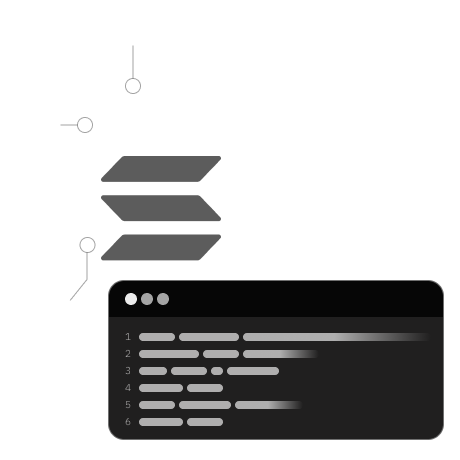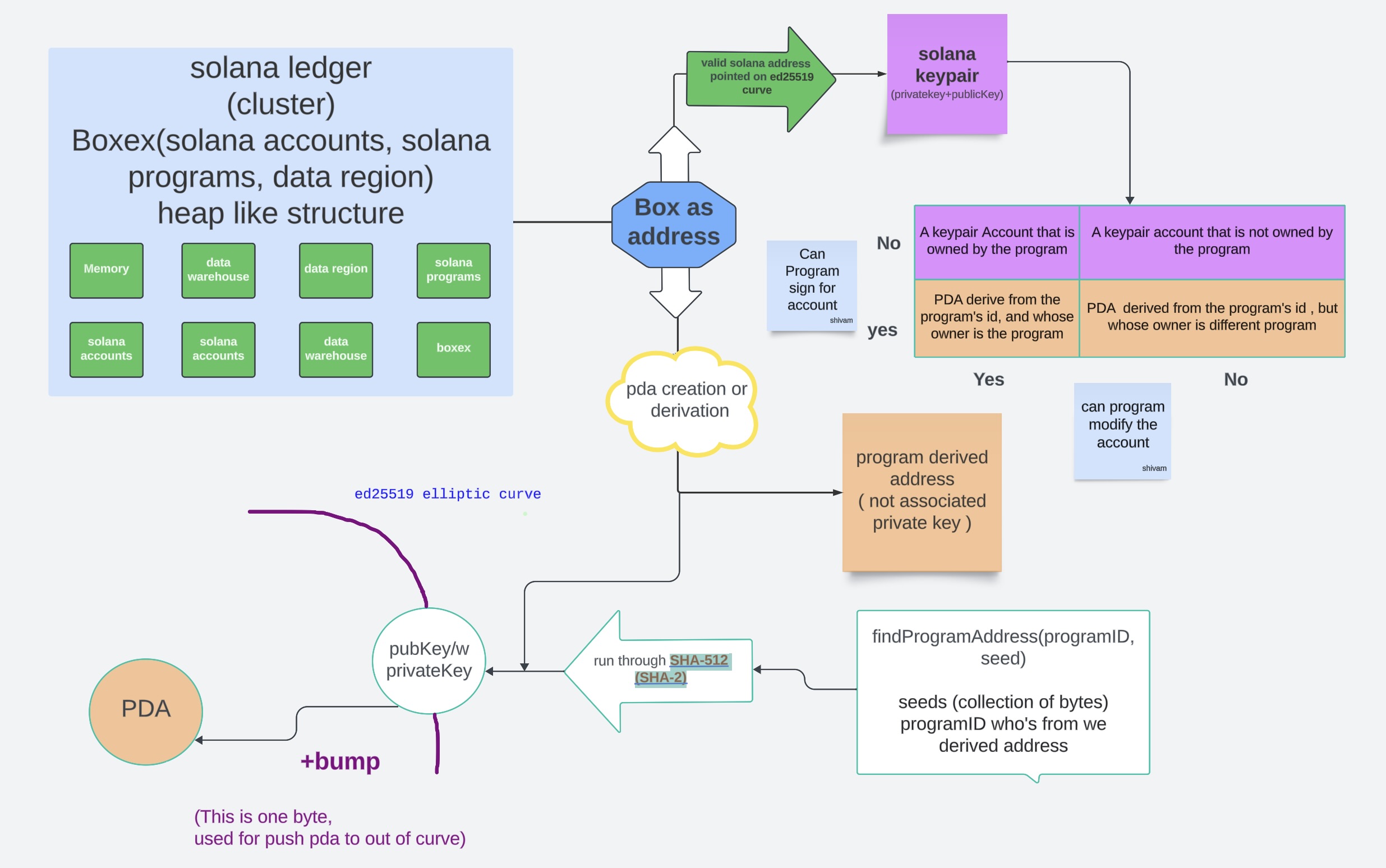
Get ready to dive into the concept of Program Derived Addresses (PDA) in Solana. We'll start by understanding what PDAs are and how they're used in cross-program invocation. Then, we'll explore various use cases of PDAs in Solana.
In Solana, accounts are often misunderstood as just wallets. However, they're more like containers or buffers that can hold data. This unique approach to accounts is key to understanding how Solana operates.
Solana uses two main types of addresses:
-
Standard Addresses: Created using the ed25519 cryptographic curve, these addresses have corresponding private keys and can sign transactions.
-
Program Derived Addresses (PDAs): These are special addresses created by programs and don't have corresponding private keys. They can't sign transactions on their own.
A Program Derived Address (PDA) is an address generated by a program for specific use cases. It's controlled by a program, not by a user with a private key. PDAs allow programs to manage accounts and sign transactions programmatically.
- PDAs enable Cross-Program Invocation, allowing Solana apps to interact and compose with each other.
- Regular accounts can have up to 10MB of data, but PDAs are limited to 10KB.
PDAs are derived from a combination of a program ID and specific seeds (like strings or user public keys). This combination is run through a hash function. If the result isn't a valid point on the cryptographic curve, it becomes a PDA.
Seeds can be anything, like a string or a user public key. A 'bump' is used to adjust the seeds until a valid off-curve PDA is found. This process ensures that a PDA can be consistently recreated.
To get a clearer picture, here's a diagram illustrating the concept of PDAs in Solana:

Now that we've covered the theory, it's time to apply these concepts in practice. We'll be building a Solana program that utilizes PDAs, giving you hands-on experience with this fundamental aspect of Solana's architecture.
Get ready to delve into the practical side of Solana programming with PDAs!